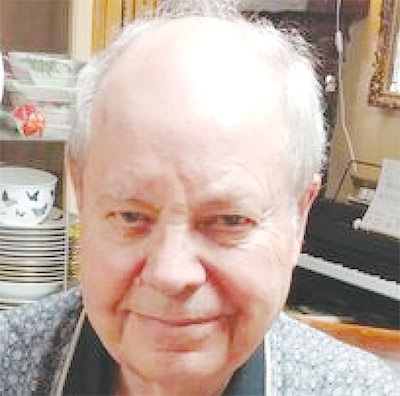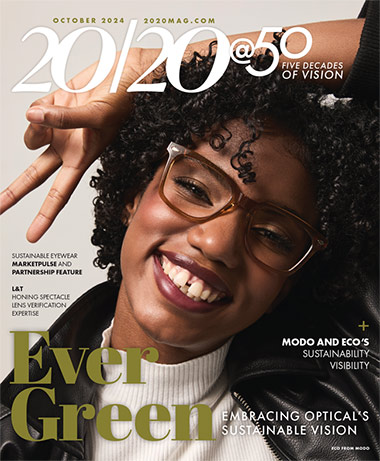 Dear Fabulous Readers,
Dear Fabulous Readers,
I was thinking about mentorship recently and how fortunate I have been to have career-altering mentors. My first mentor, outside from my optical mom, was Wolfgang Liese… the finest optician ever. I had the great opportunity to reconnect with him and to interview him for this column. So, dear readers, I present to you, The Very Fabulous Wolfgang Liese:

Ms. Specs: Wolfgang, how did you get into the profession of opticianry? Where did you start?
WL: I was a busboy in a German restaurant in N.J., and after hours I used to play the accordion, guitar and sing songs. Somebody took a liking to me and told me that if I ever wanted to learn something with a good future, they could get me a job. That was Bausch + Lomb in N.J.
What did you do at Bausch + Lomb?
At that time, it was all glass. I learned how to use the generator to surface the lenses. One specific person there taught me how to use the generator, and in the evening, the foreman came over to me and said, “pretty damn good.” So, I served an apprenticeship there, and two years later, I passed the written and practical tests to become an optical technician. Then, I learned finishing at Hofritz Opticians, Master Opticians. They taught me the art of dispensing, adjusting and more. This was in 1964. In 1968, I moved to Maine and worked for Berries Opticians in Brunswick. I knew more about dispensing eyeglasses than Mr. Berrie himself. One time, a challenging customer came in, with complaints of driving and glare, so I recommended anti-reflective coatings. This was a new technology that was not well known, and I introduced this to the business. I then opened my own optical business, Classic Eyewear, in 1973.
I remember you were the first to introduce genuine buffalo and tortoise frames to the Portland, Maine area. I recall my knees shaking when attempting to adjust them. What is the most expensive or challenging frame/eyewear you have worked with and dispensed?
Around $3,500, a buffalo horn frame. This was around 1980 to 1981.
I also recall, when you interviewed me, part of the interview was checking my knowledge of anisometropia and slab-off prism. How did you become the prism guru?
By studying, by reading, by practicing. Many customers who were wearing slab-off prism glasses from my business would spread the word and show others, which resulted in many future customers.
I also remember you often had a line of customers waiting to see you, although there were other opticians available. I recall them telling me that they only trusted you for their lenses and adjustments. What was your most memorable optical experience or patient?
There were several of them. The first one was Leo. His prescription was -35.00 Diopters. I did a 38 mm myodisc, and he was able to drive with them. We compensated for vertex distance and made sure the “circle” was similar to a seg height so he could see out of the center part of the lens.
The second one was a customer with Myasthenia Gravis (MG). His prism changed from one moment to the next. I devised a pair of glasses that enabled him to rotate the lenses so he could see properly. I used a perfectly round frame. He came all the way from Boston to see me. He was referred to me by an ophthalmologist in Boston who treated his ocular condition.
Myasthenia gravis (MG) is a chronic autoimmune disease that causes muscle weakness in the body’s voluntary muscles. These muscles include those that control the eyes, mouth, throat, limbs and diaphragm. They are essential for breathing, swallowing and facial movements. MG occurs when the body’s immune system mistakenly attacks healthy cells or proteins, preventing the nervous system from sending messages to the muscles.)
The strangest job I did was a pair I made for a friend of mine, Bob. I made a pair of glasses for his niece in Ireland from a picture that he gave me. I picked out a frame and made a pair of progressive lenses simply by the picture. This was in the 1980s. I figured out the fitting height and PD, and sent them to Ireland. We did not have computers then; this was all done by eye. They were perfect.
How would you advise new opticians getting into our profession? Any advice for them?
LISTEN! Pay attention and be kind… always.
Do you have a favorite mentor you would like to highlight? Let us know! They could be featured in a future Ms. Specs column.
See Well and Be Well,
Ms. Specs in the City
Laurie Pierce, ABOM
Do you have a question for Ms. Specs? Please send your question to [email protected], and we may feature it in a future column.












